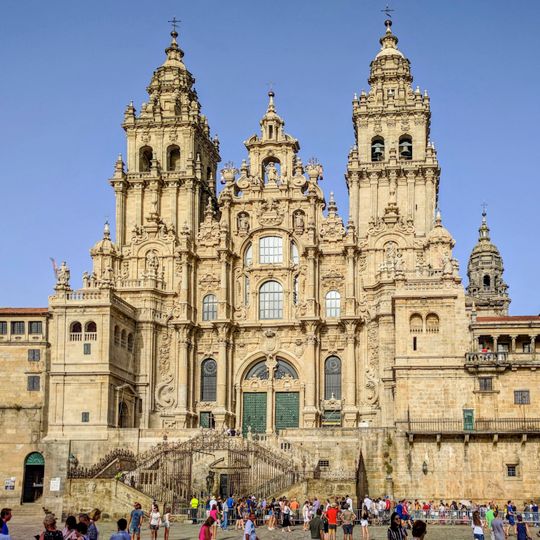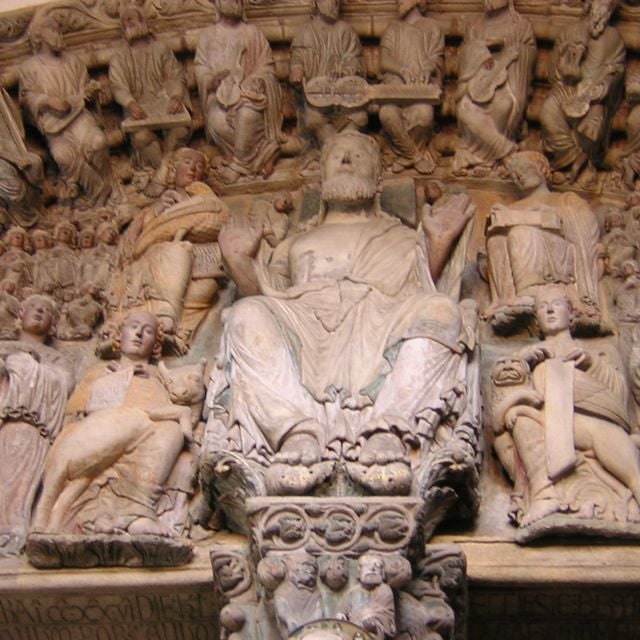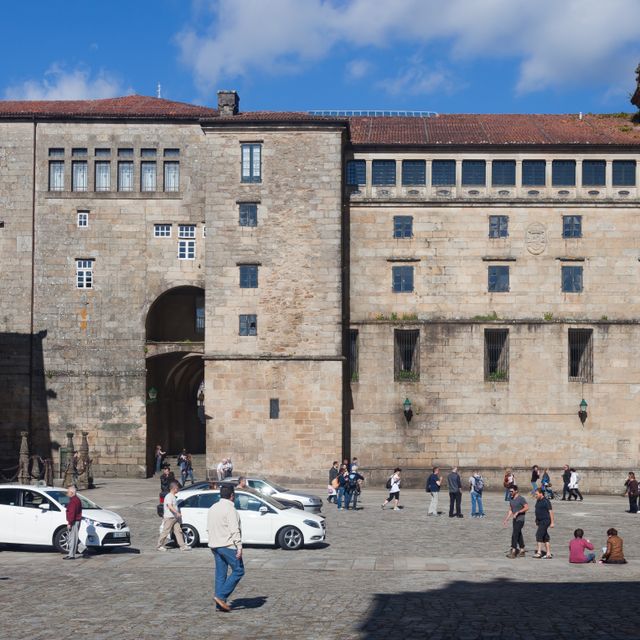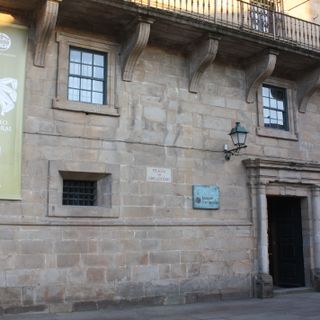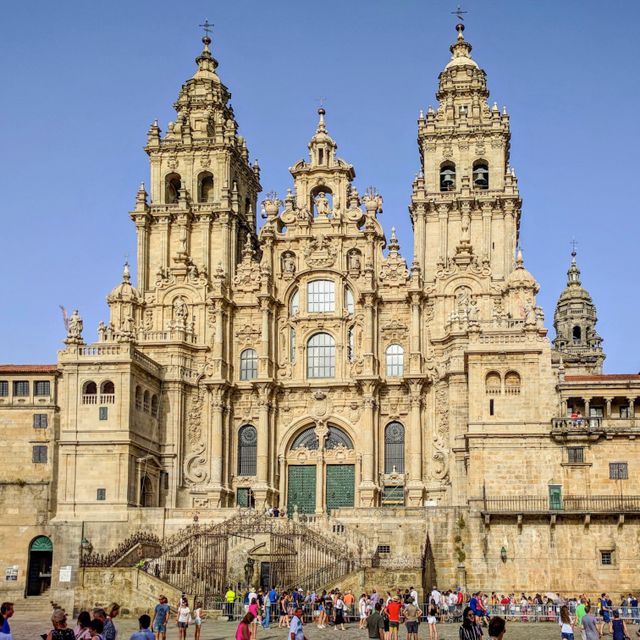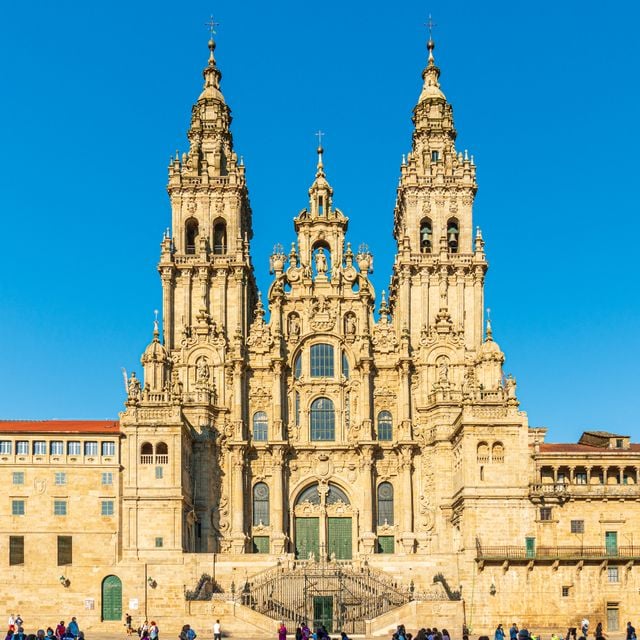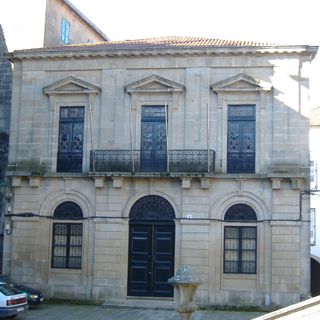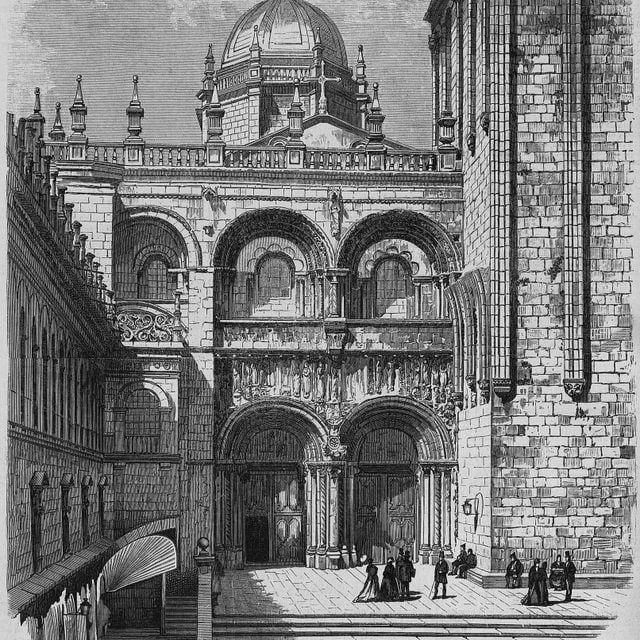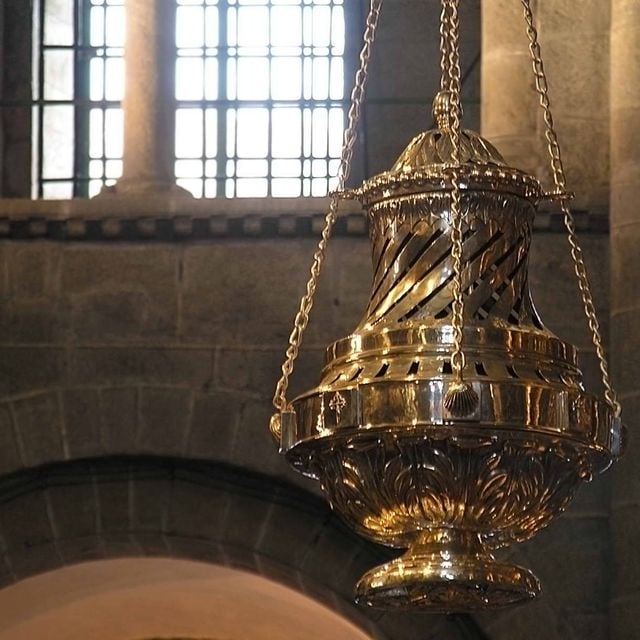Fachada do Obradoiro, Catedral de Santiago de Compostela, fachada occidental da catedral de Santiago de Compostela
Welcome to Santiago de Compostela, a city rich in history and culture. As a tourist guide, I would like to take you on a journey to explore one of the most iconic landmarks of this city - the Obradoiro façade of the Cathedral of Santiago de Compostela. The Obradoiro façade is the main façade of the Cathedral of Santiago de Compostela, facing west. It is the result of successive modifications made to the original construction from the 12th century, starting from the 16th and 17th centuries and completed by Fernando de Casas Novoa between 1738 and 1750. The façade has become the symbol of the cathedral and the city of Santiago de Compostela. In fact, it is so significant that it appears on the reverse side of Spanish coins of one, two, and five euro cents. When the Master Mateus built the famous Pórtico da Glória in the 12th century, the façade was formed by three arches and closed above by two square towers, which now form the lower bodies of the current towers. The south tower had been reinforced in the 15th, 16th, and 17th centuries, and José Peña de Toro erected the current Baroque tower over it in the 17th century. In the following century, Casas Novoa built the central façade, the south tower, and the archbishop's gallery, which functions as a buttress below the south tower. The sculptures on the façade are the work of Gregorio Fernández, Antonio Vaamonde, Gambino, among others; the polychrome is by García Bouzas. The works were completed in February 1750, and the façade was officially inaugurated with great celebrations. Casas Novoa had died on November 25 of the previous year and was buried inside the cathedral, in the Chapel of the Holy Spirit. As you approach the Obradoiro façade, you will be struck by its grandeur and beauty. The intricate details of the sculptures and the polychrome are a testament to the skill and craftsmanship of the artists who created them. Take a moment to admire the central portal, which is flanked by two towers with bells that ring out across the city. Above the portal, you will see a statue of Saint James the Greater, the patron saint of Spain, holding a staff and a book. On either side of him are statues of the apostles Peter and Paul. As you move closer to the façade, you will notice the archbishop's gallery, which runs along the base of the south tower. This gallery was added by Casas Novoa as a support for the tower, but it also serves as a balcony from which the archbishop can address the crowds gathered in the square below. The Obradoiro façade is not only a beautiful work of art but also a symbol of the religious significance of Santiago de Compostela. For centuries, pilgrims have traveled from all over Europe to visit the shrine of Saint James the Greater, whose remains are said to be buried in the cathedral. Today, the city continues to attract visitors from all over the world who come to experience its rich history, culture, and architecture. I hope this tour has given you a deeper appreciation for the Obradoiro façade and the Cathedral of Santiago de Compostela. As you explore the rest of the city, I encourage you to keep an eye out for other landmarks and hidden gems that make Santiago de Compostela such a unique and fascinating destination.
Location: Santiago de Compostela
Creator: Fernando de Casas Novoa
Source: Wikimedia

